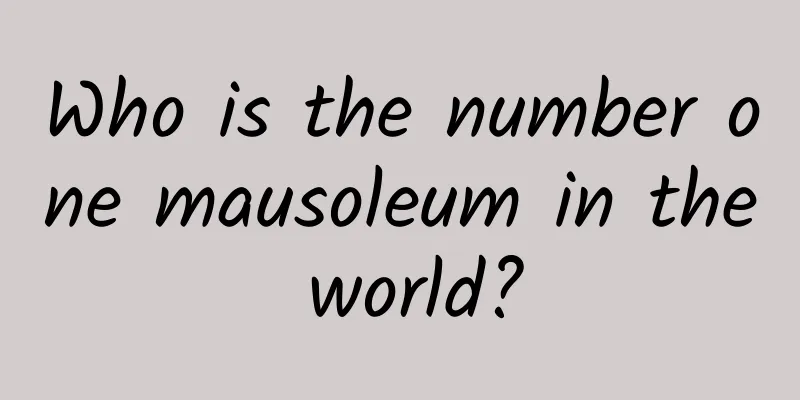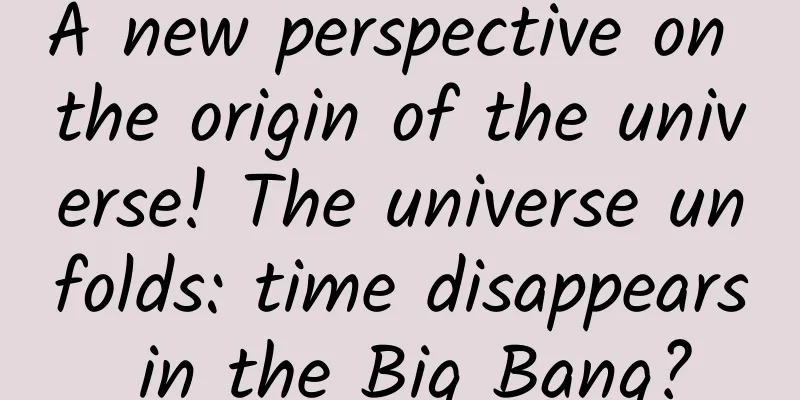Who is the number one mausoleum in the world?

|
Mid-Autumn Festival Burning incense and asking the heavens Memorializing and worshipping ancestors Night Parade of One Hundred Demons, Lantern Festival Today, Geography will take you to visit The luxurious and mysterious tombs in Chinese history ——Imperial Tomb Ling means a big earth mountain. In the middle of the Warring States Period, in order to demonstrate the supremacy of the kingship The king's tomb is as high as a mountain later Mausoleum is used to refer to the "tomb of the emperor" It means "a special passage to heaven". The magnificent imperial tombs are like history books. Recording the prosperity and decline of various dynasties The merits and demerits of emperors, the rise and fall of dynasties All buried in A mountain of evergreen pine trees and a place where emperors rest in peace The glory and turmoil of the past all came to an end here Mausoleum of the Yellow Emperor "In ancient times, the Yellow Emperor died and was buried in Qiaoshan" Legend has it that when Huangdi was 110 years old, Ascend to heaven on the giant dragon sent by the Emperor of Heaven The people bid him farewell with tears and buried his remaining clothes and hats at Qiaoshan This is the Mausoleum of the Yellow Emperor, known as the "No. 1 Mausoleum in the World". here The vast northern Shaanxi plateau Surrounded by the Yellow River rolling westward It is like a cradle that is cared for by the "Mother River". It is this huge loess "cradle" It gave birth to the ancient civilization of the Chinese nation It can also be inferred from this Why have many places over the years All are competing for the honor of "hometown of ancestors" The crown of "Yellow Emperor's Mausoleum" Always wear it on the head in Huangling County in northern Shaanxi ——This place was formerly known as "Central", which shows its importance 1961 The Mausoleum of the Yellow Emperor was listed as The first batch of national key cultural relics protection units Tied for first place in the ancient tomb category The largest altar in China, the Zhonghua Hefu Altar, located in Zhulu, Hebei Giant sculpture of a soaring dragon Photo by Dong Guijun, from Chinese Heritage, October 2018 Mausoleum of Qin Shi Huang The Mausoleum of Qin Shi Huang is the first imperial mausoleum in Chinese history. Its huge scale and rich burial objects It ranks first among all the emperors' tombs of all dynasties. The mausoleum-to-cemetery system it pioneered It effectively influenced the imperial mausoleum system for the next two thousand years. Archaeological discoveries The Mausoleum of Qin Shi Huang is one of the most famous imperial tombs in ancient China. Occupies a special and important position It is an important window for the world to understand the splendid and glorious civilization of ancient China. December 1987 Qin Shi Huang Mausoleum and Terracotta Warriors Listed on the World Heritage List ◎ The huge mausoleum and the "insignificant" Terracotta Warriors and Horses Pit The Mausoleum of Qin Shihuang is located at the northern foot of Mount Li, covering an area of about 56 square kilometers, equivalent to nearly 78 Forbidden City palaces. The Terracotta Warriors and Horses Pit, with a total area of 20,000 square meters, and the Stone Armor Pit, which covers an area of more than 13,000 square meters, seem "insignificant" compared to the entire mausoleum. (Photo from "National Geographic China", June 2005) From the underground palace, burial mound, Buildings, city walls, burial pits, etc. The omnipresent emperor concept can be seen Its design concept reflects Qin Shihuang's personal Confidence and pride in the centralized system under imperial power The most important thing is The display of the imperial ideal that transcends the emperor's personal desires This view of life and death that integrates one's own destiny with imperial rule It is also only found in the tombs of the Qin and Western Han emperors. According to Sima Qian's Records of the Grand Historian The underground palace of Qin Shihuang's Mausoleum was built through three springs Full of luxurious funeral objects There are hundreds of rivers and oceans represented by mercury There are crossbows to prevent tomb robbery The palace ceiling is decorated with astronomical images of stars Simulation of the unified Chinese territory on the ground There is also a perpetual lamp made of whale oil It illuminated the entire underground palace and lasted for a long time... Over two thousand years The tomb chamber of Qin Shi Huang hidden deep underground It has become one of the greatest mysteries in Chinese history and culture. ◎ The planned height of the Qin Shihuang Mausoleum is 115 meters. Although the height was not reached due to the war at the end of the Qin Dynasty, it is still more than 50 meters, covering an area of nearly 250,000 square meters, the highest among ancient Chinese burial mounds. Its symbolic significance will undoubtedly make the emperor's power famous. Archaeological experts speculate that the underground palace is located below the middle of the mound. The tomb chamber is located in the center of the underground palace, about 80 meters long from east to west and about 50 meters wide from north to south. The main body has not collapsed completely. The height of the space inside the tomb chamber is about 15 meters. (Photo by Xia Juxian, from "National Geographic China" June 2005) Qianling Mausoleum The Tang Dynasty had 21 emperors Except for the last two emperors (Zhaozong Li Ye and Aidi Li Yu), All buried in the northern part of the Guanzhong Plain in Shaanxi There are 18 mausoleums in total Centered on the ancient capital of Xi'an From Tailing of Emperor Xuanzong Li Longji in the east to Qianling of Emperor Gaozong Li Zhi in the west Over a length of more than 150 kilometers The 18 Tang Tombs are arranged in a diagonal line In addition, there are Yongkang Mausoleum of Li Yuan's grandfather Li Hu and Xingning Mausoleum of Li Yuan's father Li Bing And hundreds of other tombs of royal family members and nobles It constitutes a huge Tang Dynasty mausoleum complex. Since Emperor Taizong of Tang, many emperors of the Tang Dynasty used mountains as their mausoleums. Among them, Qianling Mausoleum is the most typical At the foot of the main peak of Liangshan Mountain, northwest of Xi'an Buried here are Emperor Gaozong of Tang, Li Zhi, and Empress Wu Zetian of Zhou Numerous stone statues and the tall figure of Liangshan North Peak Together they form the majestic and magnificent momentum of Qianling Mausoleum. Qianling Mausoleum is an important milestone in the history of Chinese imperial mausoleums It not only became a model for later imperial tombs to follow Also because of the legendary lives of its two owners Shrouded in mystery ◎ Three Mountains, One Scene, One Beauty Qianling Mausoleum is the most imposing of the 18 Tang Dynasty mausoleums. First of all, its beauty lies in its location. It sits on three peaks, cleverly designed using the terrain, just like a sleeping beauty lying on the ground with her head resting on the north peak of Liangshan Mountain and her feet on the Wei River. The three peaks of Liangshan Mountain in Qianling Mausoleum can be seen in the picture. The north peak is where the mausoleum is located, and there is a pavilion on each of the two south peaks. (Photo by Zhang Yongfeng, from "Chinese Heritage" April 2021) Chinese Imperial Tombs Qianling Mausoleum is the most special one It is a large-scale cave with rich collections. A man and a woman, two emperors, buried together in one room And for more than a thousand years, it has remained intact. This is extremely rare in the world. According to archaeological discoveries made by archaeologists below the main peak of Qianling Mausoleum Local Detection of Vertical Underground Palace and the excavation of the tombs near Qianling Mausoleum Experts speculate on the structure of Qianling Mausoleum It consists of a tomb passage, a tunnel, a patio, and front and back passages. And the left and right palaces On the left lies Emperor Gaozong of Tang, on the right lies Wu Zetian There are four stone caves on both sides of the front and rear passages. The cave is filled with the most valuable treasures from the heyday of the Tang Dynasty. Since the tomb passage of Qianling Mausoleum is intact No new theft holes have been found yet. Many experts believe that Qianling Mausoleum is the most important of the 18 Tang Tombs. The only tomb that has not been looted ◎ Reversing the world but being speechless Emperor Gaozong of Tang, Li Zhi, was buried in Qianling Mausoleum. Wu Zetian personally wrote an inscription of more than 5,600 words praising the merits of Emperor Gaozong, which was written by Zhongzong Li Xian and was called the Memorial of the Holy Saint. Before Qianling Mausoleum, there were no monuments in front of the emperor's mausoleum, and no epitaphs were placed in the tomb. It was Qianling Mausoleum, or Wu Zetian, who broke this convention and became a model for later generations. Wu Zetian's last words were to give up the title of emperor and return to Qianling Mausoleum for burial. At the same time, a unique stele without words was erected, implying that she was highly respected and could not be written? Or did she wish that her merits and demerits would be judged by future generations? Everyone can have their own opinions, which is wonderful and speechless. The picture shows that the body of the stele is round and the head is square, and the head of the stele is entwined with a dragon. (Photo/Mi Li, from "Chinese Heritage" April 2021) Ming Changling “The mountains are majestic, and bloom in the first month of spring; The air of the mountain is thick, and the flowers of the trees are full of vigour." The Ming Tombs integrate architecture into the sky, earth, mountains and rivers The real world and the spiritual world are mutually infiltrated and integrated 2003, Beijing Ming Tombs Special Zone I did a serious self-assessment: It is a creative achievement of an era. A testimony to a vanishing civilization A group of architectural art, monumental art A wonderful example of the combination of architecture and landscape An outstanding example of traditional human use … This assessment is almost With the United Nations World Heritage Committee The standards for applying for World Heritage are fully met According to the regulations Only one of the criteria must be met to apply for World Heritage status The Ming Tombs were successfully listed as a World Heritage Site without any suspense ◎ The Thirteen Tombs in the Ancient Map This map of the Thirteen Tombs drawn during the reign of Emperor Guangxu of the Qing Dynasty not only marks the auspicious places of the thirteen mausoleums and the life stories of their owners, but also shows the surrounding concubines' tombs, the sacred road, various sacrificial buildings, temples, and even mausoleum walls and checkpoints. The Thirteen Tombs were isolated from the world at that time, and seemed like a magnificent and peaceful valley of kings. (Photo from "Chinese Heritage" May 2013) Changling - the center of the Ming Tombs In Tianshoushan Mausoleum Area Twelve Tombs Other Than Changling They are all arranged around Changling In addition to the Ming Xiaoling Mausoleum in Nanjing Changling is the largest mausoleum among the Ming Tombs. then Each of the Ming Tombs has a magnificent memorial hall. ——The Hall of Grace Used for sacrificial ceremonies when visiting the mausoleum The Changling Ling'en Hall is the only one left today. The grandeur of the imperial tombs of the past is clearly revealed The golden nanmu pillars in the hall are all rare and precious materials. It is not rotten or moth-eaten, and the wood has a subtle fragrance. Even the three main halls of the Forbidden City rebuilt during the reign of Emperor Kangxi of the Qing Dynasty are inferior to it. Zhu Di, the owner of Changling, renovated the mausoleum during his lifetime The details of the regulations are similar to those of the Forbidden City palaces built at the same time. Therefore, the Changling courtyard is similar to the Forbidden City. Now let's go to Changling People will pay attention to the layout with a front and a back circle The biggest commonality among the Ming Tombs is this kind of plan layout. The mausoleums of the Han, Tang, and Song dynasties generally had square walls. The gates are open on all four sides, similar to a city where people live. The Ming Tombs: a new form of cemetery Actually, it was born out of the Ming Xiaoling Mausoleum in Nanjing. That is the tomb of Zhu Yuanzhang, the first emperor of the Ming Dynasty It was invented in the Ming Dynasty and became a custom afterwards. The front is for the morning, and the back is for the night. The sky is round and the earth is square, implying the meaning of ascension and the unity of heaven and man ◎ Ming Changling Qing Tai Mausoleum At the foot of Yongning Mountain, Yi County, Hebei The last imperial mausoleum of the Qing Dynasty - Western Qing Tombs Standing quietly There are Yongzheng, Jiaqing, Daoguang, Guangxu The resting place of four emperors and their concubines November 2000 The Western Qing Tombs were selected by the 24th World Heritage Committee Inscribed on the World Heritage List Among them, Tailing covers an area of about 5.1 hectares. The earliest building, the largest scale and the most complete building system It is the first of the Qing Dynasty Western Tombs. View the Tailing Mausoleum from this perspective You can especially feel it surrounded by mountains and shaded by twisted branches. Magnificent and solemn momentum (Photo by Hong Yi, from "Chinese Heritage" April 2019) Tailing The emperor with the highest aesthetic taste in the Qing Dynasty is recognized ——The resting place of Emperor Yongzheng It can be regarded as a perfect presentation of the oriental aesthetic paradigm during the heyday of the Qing Dynasty. Tailing is the first tomb of the Western Tombs. Modern architect and architectural historian Liu Dunzhen called it “The largest scale and the most orderly regulations” It can be regarded as a "model" of the tombs of the emperors of the Qing Dynasty The most intuitive feeling that “model” brings to people is “beauty” The Beauty of Tailing The solemnity and grandeur displayed in its strict order Compared with the gorgeousness of a single building The construction of Tai Mausoleum focused on momentum rather than form More on a macro scale Perfect integration with natural landscape, harmony between man and nature The Beauty of Tailing Also in its individual monomers All of them are the products of the standardization of the engineer-officer system. But it can be used in small woodwork (ceilings, caissons, doors and windows and other decorative woodwork), Between stone carvings and painted paintings Showing the interest of craftsmanship It also has a similar layout and form. The elegant and solemn style of the imperial palace architecture complements each other. ◎ I-shaped composition Looking down from the sky, from the gate of the mausoleum area - Dahongmen courtyard all the way north, through the sacred road, to the Dabeilou courtyard, it presents a "Wide"-"Narrow"-"Wide" "工"-shaped composition. This design will give people who are in it a rich and varied visual experience. (Photo by Wang Jiangshan, from "Chinese Heritage" April 2019) who I am? Where do I come from? Where am I going? Thinking about life These three issues are always When you enter the emperor's mausoleum The beauty of mountains and rivers and the solemnity and majesty of buildings It may make you think more deeply about life. - - Editor | Xiao Source | National Geographic China |
<<: Do edamame taste better when cut? I didn’t believe it, so I did an experiment
>>: In Chaoshan, why is “treating you to drink porridge” the highest treatment?
Recommend
In-depth understanding of the Android Instant Run operating mechanism
Instant Run Instant Run is a new operating mechan...
FOTILE Double 11 advocates planting trees to retain APEC blue
Last night, when I returned to Beijing from a bus...
The top 100 financial apps in September show which ones are happy and which ones are sad
The realization of financial inclusion is closely...
Why do some glues fall off easily, while others are as good as welding?
Why can glue be used to stick things together? Of...
95% of fans have lost contact, and the editor feels like they have been heartbroken? How to awaken dormant fans through operation
The number of fans is increasing, but the number ...
How to create a hit on Douyin?
In July this year, the official TikTok revealed a...
Huge profit red envelope project: a WeChat account can earn more than 10 yuan a day, small rules can make 600+ yuan a day, large-scale operations can make more than 10,000 yuan a day
Baidu Netdisk download location: b1-214-Profitabl...
Product is 1, and operation is the countless zeros behind 1...
Where there is a world, there are rumors, and whe...
Hawking's new speech system ACAT will be open source
[[123852]] The voice communication system used by...
Volkswagen Touareg plug-in hybrid version unveiled: 1,000km range but still criticized
As the flagship of Volkswagen's SUV camp, the...
Why can't your interactive solution pass? Experts from big companies teach you these four methods!
This week, we specially invited Yi Yi, a former s...
To do community operation, you need to have 3 kinds of thinking!
Community operation needs to start from these thr...
Toyota also likes to mix and match? Fengshi may be launched in March next year
Recently, domestic media reported that FAW Toyota...
There are only a few habits between you and the big guns of operations
It is basically a consensus among everyone that o...









